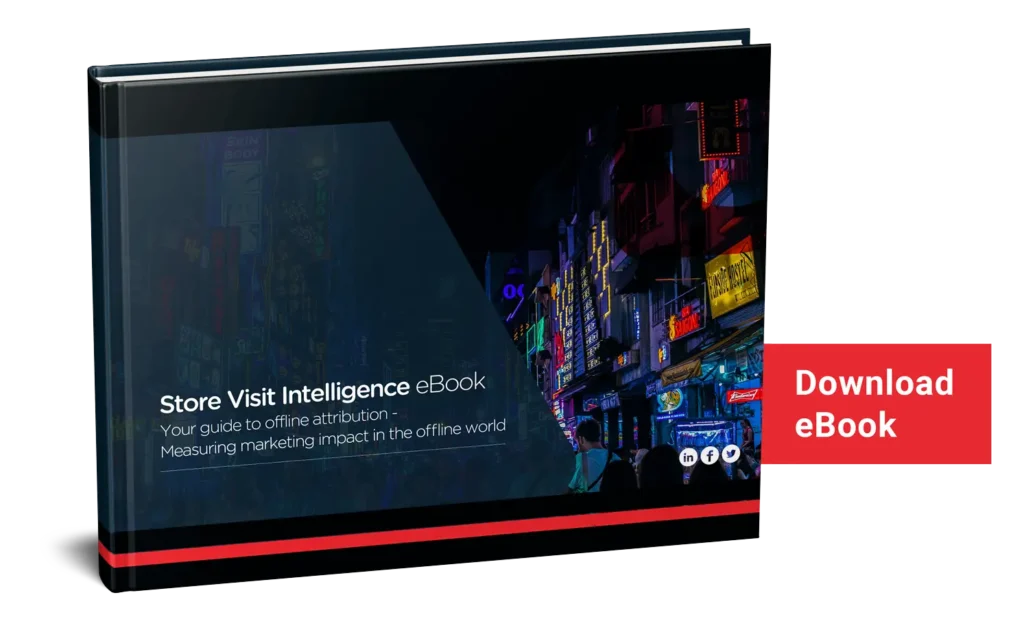In June 2019, Decathlon opened Hong Kong’s largest sports store, with a multi-channel campaign that led to one of the brand’s most successful store openings in the APAC region. The decision to use real-world data intelligence for its programmatic activation helped the brand drive in over 150,000 visitors in the first week.
Decathlon could quantify the impact of the marketing dollars spent to get store visits only because it could measure store footfall. Offline intelligence and measurement also helped the brand with audience attribution insights to run better marketing campaigns. As programmatic media buying and technology continue to grow, more brands are now focusing on offline intelligence as a core technology to measure campaign performance and drive in-store visits.
Definition of Store Visit intelligence
Store visit intelligence or store footfall attribution empowers retailers to measure the success of online campaigns resulting in in-store visits. This helps marketers understand the effectiveness of campaigns across media and better optimize channels that get them the best results for the marketing money spent.
How can brands measure Online-to-Offline conversions?
The success of online campaigns in the offline world is measured with respect to the ‘lift in-store visits’. At Azira, the lift in-store visits is calculated as a ratio of the percentage of exposed audience seen at the relevant physical stores to the percentage of non-exposed audience seen at the same stores. This ratio is called the ALI (Attribution Lift Index). An ALI of more than 1 signifies an effective campaign. To calculate the ALI, brands usually consider an attribution window which is the time period from the launch of a campaign to the time a conversion is made. Usually, attribution windows range from 7 days to 14 days depending on the nature of the campaign.
Why do brands need Store Visit Intelligence and Measurement?
Store visit intelligence and measurement help brands understand how marketing campaigns are changing consumer behavior and learn how to decrease the cost per incremental visit to increase ROAS. There are several ways store visit intelligence can be of great value to marketers:
1. Measure marketing impact in the offline world
There are multiple campaign metrics that help advertisers understand the performance of an online campaign, but offline measurement remains a challenge. With an independent and platform-agnostic online-to-offline attribution technology, marketers can measure in-store footfalls linked to each campaign.
2. Gather store visit intelligence on audience
Store visit intelligence can provide granular audience insights both on the attributed and the control audience. This real-world intelligence includes demographics, brand affinity, and interest-based information. Such actionable insights can enable marketers to have an in-depth and multi-dimensional understanding of their audience.
3. Maximize the effectiveness of advertising
Store visit intelligence gathered on the audience will facilitate personalized audience curation for future campaigns. This can be achieved through fine-grained actionable insights. For example, a certain campaign can drive more millennials into the brand’s stores – that is a good way of understanding what works or does not work for different segments of the audience by comparing both the attributed and the control audience insights.
What factors should be kept in mind before Implementing Store Visit Attribution?
As per our recent survey, while a whopping 89% of marketers have an online attribution technology in place, only 33% of marketers measure success in the offline world. This difference makes offline attribution a potential key to remain ahead of the competition. Though measuring the consumer journey is now a mature science in the online world, calculating an unbiased and accurate store footfall attribution still poses several challenges for brands and agencies at large:
- Connecting online and offline data sets at scale
While data currency for online data sets includes cookie IDs and device IDs, offline data sets use latitude and longitude specifics. In order to create an online to offline attribution, unifying online and offline data sets is important and this requires access to large repositories of varied data types and a robust technical architecture to analyze these datasets at scale. Not many companies in the data space are equipped with capabilities such as linking online and offline consumer identifiers, location definition mechanisms, baseline definition for attribution lift calculation, and befitting reporting tools.
- Availability of accurate real-world data
The availability of high volume and high-quality location data is sparse. Moreover, location pings need extensive cleansing and sophisticated data models to derive intelligence. For example, if a location is seen only as a pin and not as a polygon, the results might be inaccurate.
- Limited access to footfall data
Gathering complete and accurate information on the entire footfall in stores is not possible and offline attribution models have to rely on subsets of the total footfall as sample data sets.
- Device/platform based vs user deduplication
Attribution models use device-based models to measure online to offline conversion. But since a consumer uses multiple devices in the real world, store visit attribution requires matching all devices of a single user to that individual. While this is a challenging task, it is crucial in order to deduplicate devices and get accurate results.
- Consumer behavior is a complex subject
According to eMarketer, about 43% of millennials research online and buy in-store, while 13% research in-store and buy online- and then there are other categories- consumers who strictly stick to either online or offline channels. Consumers are not completely moving to single touchpoints-not anytime soon- and that makes the task of online to offline attribution even more complicated.
Everything you need to learn about Store Visit Intelligence and measurement is here
Key questions answered in the eBook:
- What is Online-to-Offline Measurement?
- Why is Offline Measurement Important for a Modern Digital Marketer?
- Why do you need an Independent Offline Measurement Product?
- What makes Online-to-Offline Measurement a Challenge?
- What are the Best Practices for executing a Store Footfall Attribution Campaign?
- How does Compass Solve Online-to-Offline Measurement?




